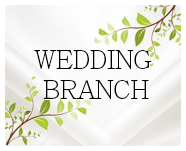It’s safe to say we wouldn’t blame any couple for wanting the rustic charm and nature inspired architecture that this style of venue offers in abundance! But as unique as every couple is, barn venues aren’t all the same either. Some offer additional outdoor spaces for entertaining or larger wedding parties, idyllic countryside backdrops and romantic reception rooms in need of minimal decoration.
Let historic tales and unique characteristics tell the story of each venues’ heritage and development within their surrounding organic landscape. Designed to evoke romance, fall in love with quirky outbuildings, festival yurts and miles and miles of coastal country views…
Boconnoc | 18th Century Stable Yard Barn
The 18th-century Stable Yard at Boconnoc is a wonderfully romantic setting with four fabulous barns, a courtyard and breathtaking views across the Boconnoc parkland. Say your vows in the rustic Coach House while the sun pours through the open oak doors. Your wedding breakfast can be an elegant affair in the beautiful Soane Room or a casual feast with trestle tables and hay bales in the courtyard. Dance the night away in the festoon lit courtyard. And when it is time for bed, there are three luxurious cottages just a few steps away.
The Tythe Barn | Original Lambing Farm
An award-winning wedding venue and stylish wedding setting, The Tythe Barn stages many events, but says that weddings are their ‘thing’. The 14th-century barn exudes style with its combination of original features and quality interior styling. As it was the old lambing barn on the family farm, the team have been passionate about the refurbishment of the barn and attention to detail has been vital. Now, The Tythe Barn provides the most amazing setting, fortunately joined by a professional team of chefs as their in-house caterers. They are also confident that, having hosted a few, they know how to put on a good wedding.
With the option to get married inside or out and two further adjoining barns, The Tythe Barn offers huge flexibility. Plus, there’s a wonderfully restored barn dedicated solely for the bride and her bridesmaids to get ready in and much more…
Blackwell Grange | Cotswolds Barn And Walled Garden
From its tranquil Cotswolds location, to the elegant, contemporary interior design and exceptional attention to detail, Blackwell Grange is a special place to say “I do”. The spaces are diverse and characterful. From the original Thatch Barn, where your ceremony will take place and across the Apple Tree Lawn to the contemporary Orchard Barn, the venue for your wedding breakfast and celebration. There are lots of stunning photo opportunities everywhere you turn. As your wedding day draws to a close, you can spend the night in the Hayloft Honeymoon Cottage, overlooking the Walled Herb Garden.
Gaynes Park | Woodland Country Estate
Save
Gaynes Park is a stylish and contemporary wedding venue in Essex, set in the grounds of a historic country estate which has been in the Chisenhale-Marsh family for generations. The picturesque venue is surrounded by British countryside, made up of farmland and woodland. Given its secluded and tranquil setting, it is hard to believe that this superb country wedding venue is at the end of the busy Central Line. It is only minutes from the M25 and M11 at Epping, an ideal location and easily accessible for all of your family and friends.
Notley Abbey | Impressive Rural Abbey and Garden Barn
Notley Abbey is a magnificent country house wedding venue with a truly magical past. Once the home of Laurence Olivier and Gone with the Wind actress Vivien Leigh, this impressive Abbey, on the border of Buckinghamshire and Oxfordshire, can be your dream home for 24 hours. A one-of-a-kind, tree-lined driveway leads you to a historic, fairytale wedding venue. Notley Abbey features romantic reception areas, an intimate ceremony hall, glorious grounds and gardens (with the opportunity to host an outdoor wedding). It also offers nine beautifully appointed guest suites and an utterly stunning rustic barn for up to 190 guests.
Eden Barn | Valley Stone Barn
Nestled below the stunning North Pennines Area of Natural Beauty is where you’ll encounter Eden Barn. An exclusive and intimate wedding venue that will immerse your guests in Cumbria’s enchanting Upper Eden Valley. The traditional Westmorland stone barn seats 126 guests for a sit-down meal and 200 for an evening reception. Eden Barn is a family run business who believe that weddings should be fun, relaxed and totally personal to you.














